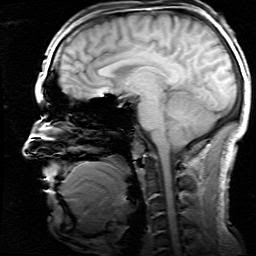For one of the last batches of the "season", I opted for another all-grain IPA. This was a chance to try out a few new ingredients as well as a new recipe style. For
my first IPA of the brewing season (an extract beer), I found that it ended up a little too sweet for my tastes. Some reading suggested that crystal malt could be behind this (although I only had 8 oz. in that recipe--on the other hand, it was fairly high gravity, too, at 1.070 s.g., but most of my extract IPAs have been on the sweet side). So, I decided to try a crystal-free recipe.
Additionally, I've been wanting to try some new hops varieties. The owner of my local homebrew shop said they had something called Nelson Sauvin in stock, and he had been wanting to try it too. That was good enough for me, so into my recipe it went! Pretty much everywhere I read said, "No equivalents" for substitutions...and the variety is
usually described as having "white wine" character, so that sounded like an awesome dry hopping opportunity. I also wanted to use up some of the partial bags of hops pellets in my freezer, so Northern Brewers and Nugget went into the kettle too. With the mix of hops origins (New Zealand, Europe, and North America), and with my tradition this year of
naming batches after various supercontinents, "
Rodinia IPA" seemed appropriate.
Rodinia IPA
- 13 lbs. pale malt
- 2 lbs. Munich malt
- 0.95 oz. Northern Brewers hops pellets (8.5% alpha) - 60 minutes boil
- 1.4 oz. Nugget hops pellets (14.0% alpha) - 20 minutes boil
- 1 oz. Nelson Sauvin hops pellets (12.0% alpha) - 1 minute boil
- 1 tsp. Irish moss (10 minutes boil)
- 1 pkg. BRY-97 American West Coast Yeast (Danstar - 11 g)
- 1 oz. Nelson Sauvin hops pellets (12.0% alpha) - 14 days dry hop
Steps
- I mashed in with 4.75 gallons of water to achieve a temperature of ~153° (which stabilized here about 15 minutes in). By the end of the mash, the temperature was at 150°. I collected 3 gallons of wort, and sparged with 3.25 gallons of water at 170°. From this, I collected 3.4 gallons of wort.
- In total, I collected 6.4 gallons of wort, with a preboil gravity of 1.061. This works out to 71.3% efficiency--not too bad!
- I heated the wort to boiling, planning for a 90 minute total boil with successive hop additions. The Northern Brewer hops were boiled for 60 minutes, Nugget hops for 20 minutes, and Irish moss for 10 minutes. An ounce of Nelson Suavin was added a minute before flame-out.
- Using my wort chiller, I chilled the wort down to 70°, whirlpooled, and let it sit for 15 minutes. During this time, I rehydrated the yeast.
- I transferred the wort to the primary fermenter. This resulted in 4.3 gallons, with a starting gravity of 1.076. This is quite a bit higher than expected (1.071 from BeerSmith)--I suspect the reason is because I ran a very vigorous boil. From the 6.4 gallons of originally collected wort, and assuming the typical 0.5 gallon of sludge left behind in the kettle, that's a total of 1.6 gallons boiled off over the 90 minutes. BeerSmith had only assumed 0.75 gallons (0.5 gallons/hour), so I might need to adjust that in the future.
- I pitched the yeast immediately before sealing up the primary fermenter (a carboy). 24 hours on, I'm not seeing any visible fermentation activity. I'm not entirely sure if this is due to the relatively high gravity of the wort, or if it is a character of BRY-97. My past batches with this yeast have also been slow to start, and this also was mentioned on other sources. In any case, if I don't see activity within 48 hours from the initial pitch, I'll probably repitch the yeast.
- This batch was brewed on 12 April 2014. At this writing, the beer is at about 65° for the primary fermentation.

